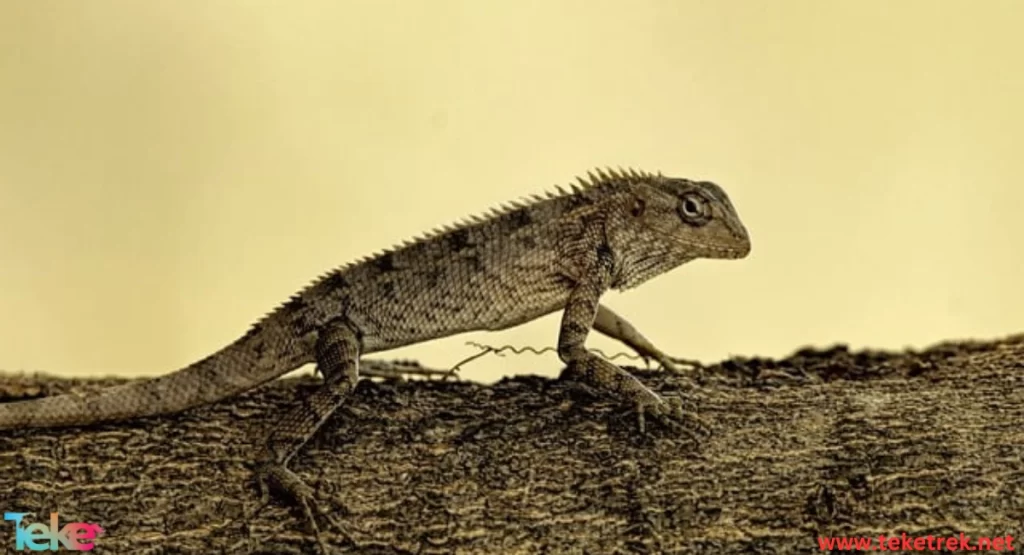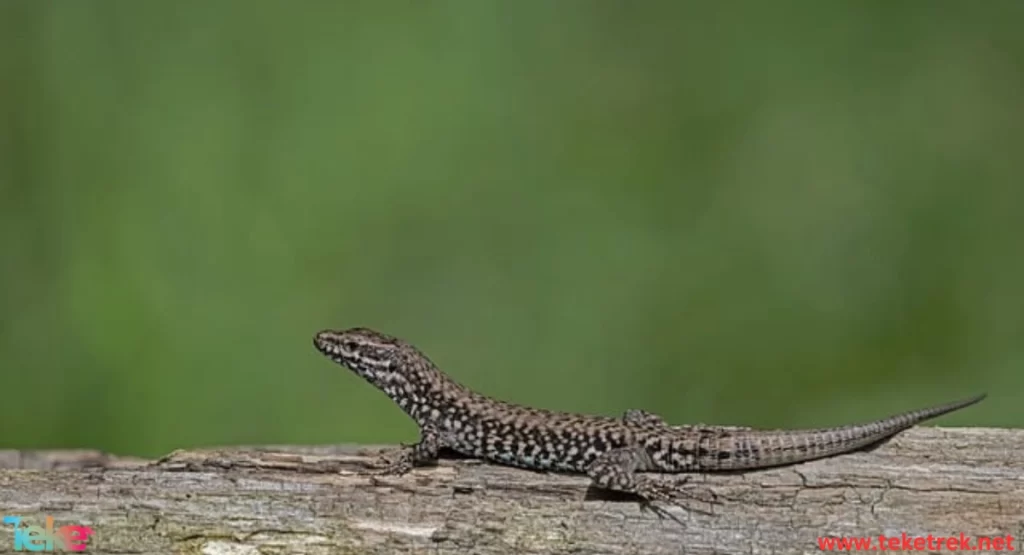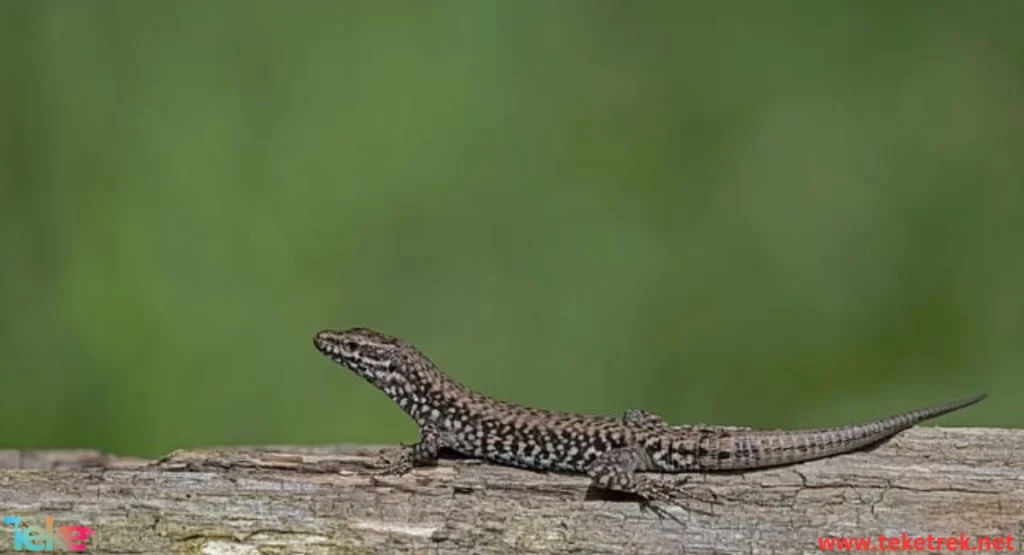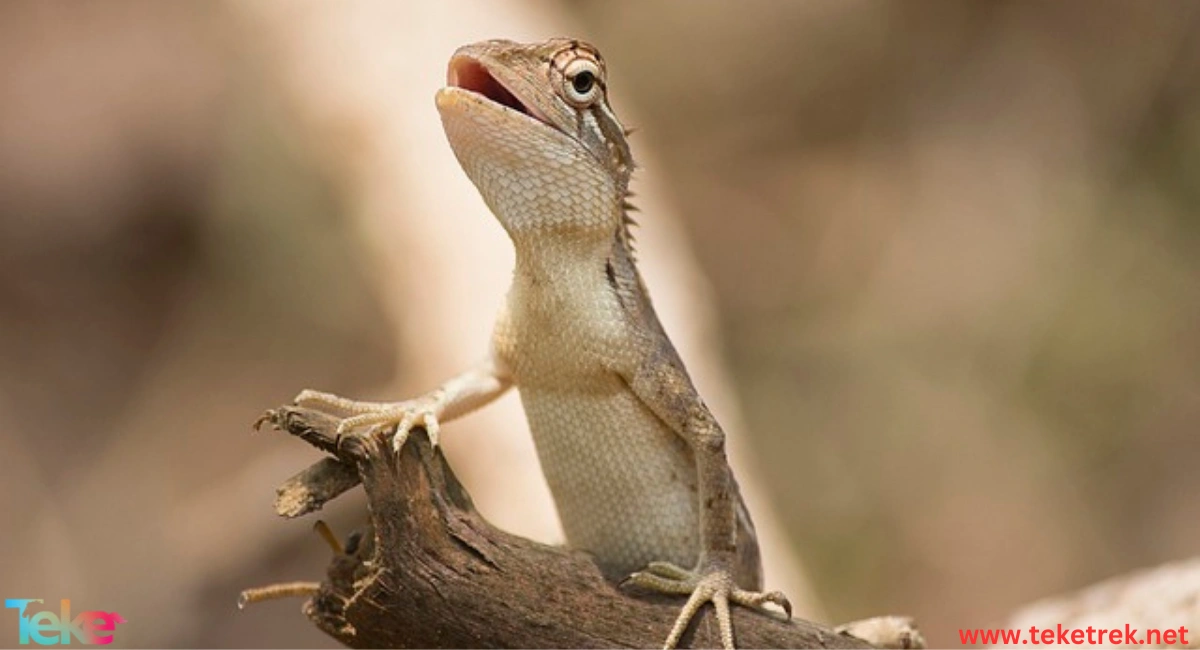The lizard is one of the types of reptiles, small reptiles from the order Squamata with cold-blooded animals, long tails, and four legs. There are about 2,700 species of lizards on our planet, only two of which are poisonous, the cone-nosed lizard and the Gila monster, both from Mexico.
In this article on TekeTrek Website, you will learn about the lizard, its characteristics, lifestyle, and find a lot of fascinating information about it.

Information about the lizard
The lizard is characterized by having external ear openings and movable eyelids. The lengths of adult species range from a few centimeters to nearly three meters, and they come in different sizes, colors, and shapes.
In general, lizards are characterized by having:
- Four limbs
- External ears
- Movable eyelids
- Short neck
- Long tail
If a lizard is preyed upon by a predator and its tail is cut off but it manages to escape, its tail will regrow and return to its natural shape.
In fact, many lizards are capable of regenerating lost limbs, meaning if a lizard loses one of its limbs during a struggle with a predator, it will grow back completely just like its tail.
The color of many lizard species changes in response to environmental changes. One of the most famous lizards in this feature is the chameleon.
These lizards have special cells located in layers beneath their transparent skin. The layers contain pigments that affect the color.
Lizards are found on all continents and in all regions except extremely cold and frozen areas. They mainly feed on insects.
The lifespan of a lizard
The lifespan of a lizard depends on its species. For instance, the common agama lizard lives for about 10 to 15 years in captivity. The gecko lizard ranges between 5 to 7 years, while old iguanas for around 20 years, with some types live more than 40 years.
Here are some well-known types of lizards
- Bearded Dragons: Known as dragons or dragon lizards, they are one of the most widespread lizards in the world. They come in various sizes (ranging from 5 inches to 1 foot) and a wide range of colors. They are found in Africa, Asia, Australia, Southern Europe, and feed on insects, grass, berries, seeds, and small lizard eggs.
- Legless American Lizards: Due to their appearance, legless lizards are often mistaken for snakes. However, upon close observation, this type of lizard has clear eyelids, distinguishing them from snakes. They are found in North America (primarily California) and feed on insect larvae, beetles, termites, and spiders.
- Anole Lizards: These are small lizards usually found near homes and public gardens in the southeastern parts of the United States, Cuba, and Jamaica. Most species in the family are green, but a few are brown. Anoles change color based on their mood and surrounding areas. They feed on larvae, cockroaches, spiders, and mites.
- Chameleons: One of the most famous lizard species globally, known for their ability to change body color to blend with the environment. Their slow movements and precise, long tongues make chameleons skilled hunters. They are found in Africa, Madagascar, Spain, Portugal, and South Asia, feeding on insects.
- Collared Lizards: These are fast-moving lizards with long limbs and tails. Some species are known for running quickly on their hind legs, resembling small dinosaurs, and are often found in deserts. They are found in the southwestern United States and northern Mexico, feeding on insects, small mammals, and other lizards.
Reproduction in lizards
Reproduction in lizards varies depending on their species and habitat, but here’s a general overview of the lizard reproduction process:
- Mating times vary among species and habitats, but many lizards mate in spring and summer.
- The sex of the lizard is determined by the temperature of the environment in which the egg incubates. Higher temperatures lead to female offspring, while lower temperatures lead to male offspring.
- Lizards lay eggs in the soil, under rocks, or in other secure locations. The number of eggs varies depending on the lizard species and size.
- Eggs are left in place to hatch under the influence of natural heat, and there is no role for the mother in caring for the eggs or offspring after laying.
- The growth period varies by species, but juveniles remain in the juvenile stage for a period that can extend for several months or years before reaching sexual maturity.
It’s important to note that some lizards rely on egg-laying reproduction, while other species opt for viviparous reproduction. Reproduction success is influenced by environmental factors such as temperature, food resource availability, and protection from predators.
Benefits of lizards Meat
In popular culture, lizards’ meat is believed to be rich in protein, vitamins, and minerals, and it is used in traditional medicine in some cultures. It is considered a potential food source in certain regions and is part of the culinary heritage in some communities.
Damages of lizards
There are no specific known drawbacks to consuming lizards meat, but it should be avoided if it has been exposed to toxins or contaminants. It should also be consumed cautiously by individuals who may be prone to allergies or allergic reactions.
Interesting facts about lizards
- Lizards belong to the reptile class of squamates, along with snakes.
- Over 3000 species of reptiles have been identified worldwide so far. Lizards are found almost everywhere except the polar regions due to their inability to tolerate extremely low temperatures.
- The majority of lizards are terrestrial, but some are aquatic.
- Lizards are ectothermic animals, meaning their body temperature is regulated by the surrounding environment. Therefore, if the weather is extremely hot or cold, the lizard’s body may not be able to adapt, leading to death in extreme temperatures.
- Lizards have long tails and eyelids, unlike snakes. They also have four limbs, usually with five toes on each foot.
- Lizards are generally considered safe as pets in the home. However, beware, there are two types of lizards that pose a danger as they are venomous: the Gila monster and beaded lizards found in the deserts of North America.
- For small species of lizards, it is common for them to easily detach their tails if they feel threatened or confronted by a potential predator. At first glance, this may seem like a weakness, but according to reptile scientists, tail detachment is a defensive mechanism for lizards. It distracts predators, as they will chase the tail instead of eating the lizard.
- Most known species of lizards eat insects, earning them the nickname “insectivores.” Lizards are considered beneficial insects because they help control insect populations without becoming a nuisance. However, due to current harmful agricultural practices among farmers, lizards and other beneficial organisms die along with pests.
- Some species of lizard’s prey on small animals such as birds and rodents, and these are called carnivorous animals. There is a small group of lizards that eat plants, known as herbivores.


Questions and answers about lizards
- Is lizards’ meat delicious?
lizards’ meat is considered delicious by some people, as they describe it as having a distinctive flavor and a satisfying texture. It’s worth noting that tastes vary among individuals, so while some may find camel meat delicious, others may not find it acceptable.
- Why do Saudis eat lizards?
Lizards are considered part of the culinary heritage in some Arab communities, including Saudi society. The lizard is a part of the traditional food culture in desert regions, where it is believed to have high nutritional value, and its meat is considered tasty and nutritious. Additionally, lizards can be easily found in desert environments, making them an accessible food source for the inhabitants of those areas.
- What does a lizards eat?
Lizards primarily feed on insects such as caterpillars, crickets, and spiders.
- What are the benefits of eating lizards’ meat?
- It is a healthy and nutritious source of protein.
- In some cultures and communities, it is considered part of the traditional and local diet.
- It may contain beneficial nutrients such as vitamins and minerals.
- In some cultures, and communities, it is seen as a symbol of strength and health.
In conclusion, the information provided about lizards may have changed your perspective on them, especially due to their important ecological role and impact. Most of them are non-venomous and do not cause any harm to humans.






